Les Paissels in Saint-Chinian-vineyards on schist. Part 1
This blog post is a tale of lost vineyards, energetic winemakers, bold wines, Les Paissels and Suze. Not Susie. Suze. I will explain later.
Completely mesmerized by the sheer beauty of this part of Languedoc, we took our time to get to the town of Babeau where Les Paissels is located.
Due to some poor planning on our part, breakfast was not in the books for us. But, on the plus side, we arrived at the doors of the winery early enough to see the little green tractor hauling in the harvest.
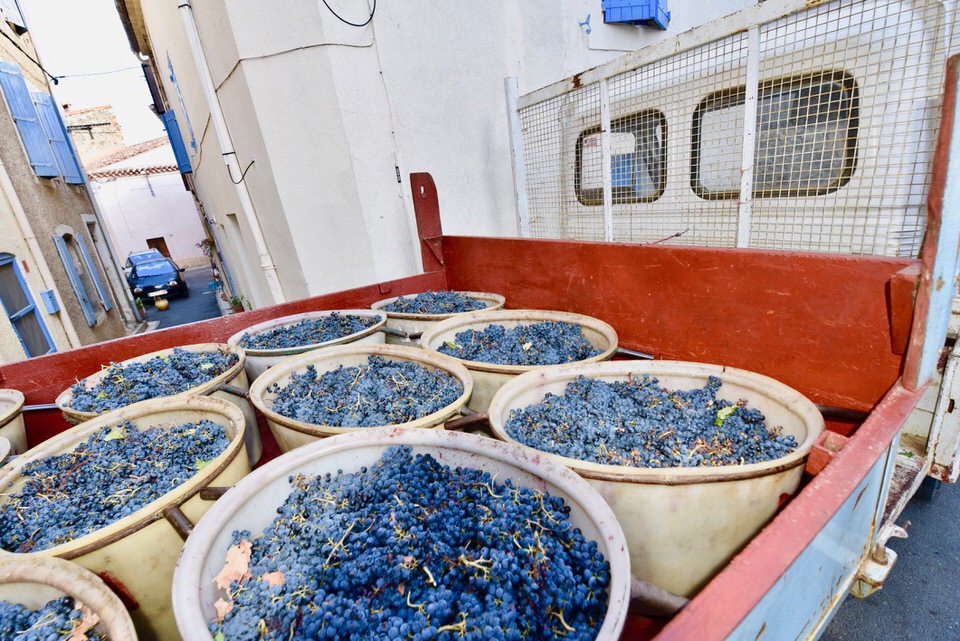
Les Paissels is a small winery. Small in terms of it’s acreage and also production. But this is one mighty winery and people who know us have heard ad nauseam about our unbridled love for the wines of Marie Toussaint and Vivien Roussignol. Their first vintage was the 2011.
Below are some comments from others over there past few years:
Decanter:
…This wine is Midi sunshine in a glass…
…lots of perfume on the aftertaste too. Impressive.
…Youthful and dramatic.
Jeb Dunnuck:
…Count me impressed…..Unfortunately, there’s a scant 400 cases made.
Robert Parker’s The Wine Advocate (Joe Czerwinski):
…a fine expression of schist-grown old-vine Carignan. And it sings.
…Coming all from schist soils and aged in stainless steel, it has shocking purity of fruit and sweet tannin, which is saying something for Carignan!.
And then last year:
La Revue du Vins de France:
..Un grand future de Saint-Chinian..(The grand future of Saint-Chinian)
In 2018, at a professional tasting (21 sommeliers) at the Maison de l’Occitanie in New York, among the 204 wines from Saint-Chinian tasted, the Les Paissels score among the first 5!
Yes, Les Paissels is the real deal.
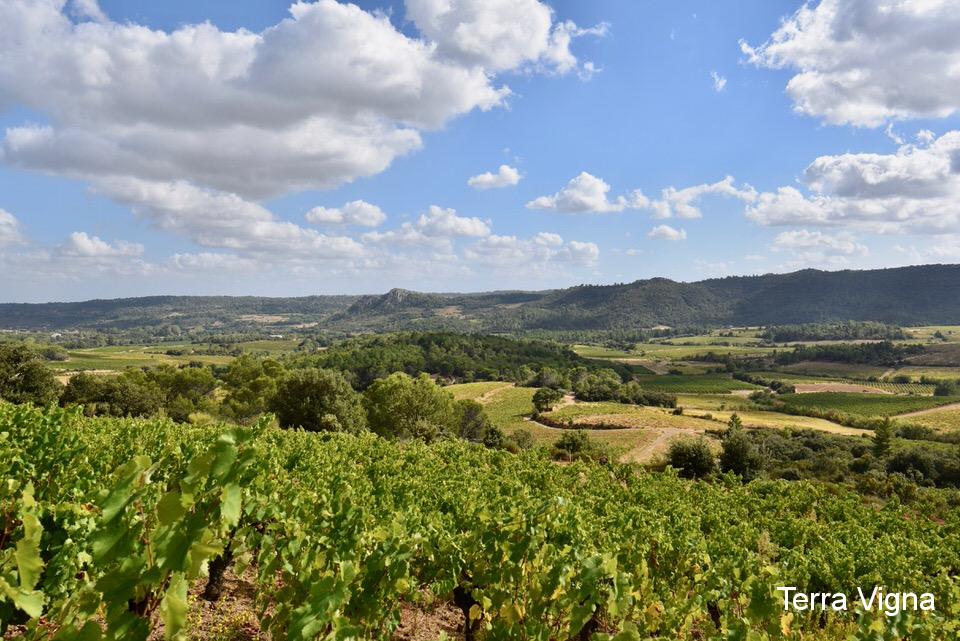
Bear in mind that both the Les Paissels and the Le Banel are some of the best wines on our wine portfolio. Many of you have had the Le Banel and the Les Paissels and are very familiar with their wines. Today we also got to taste the almost-mythical Les Jalouses.
The vineyards of Les Paissels may be small, but they are mighty and old. Some of the vines are from 1910! That’s 108 years old! Willam Howard Taft was the President when these vines were starting. The Ford Model T was not made and the Panama Canal didn’t exist!
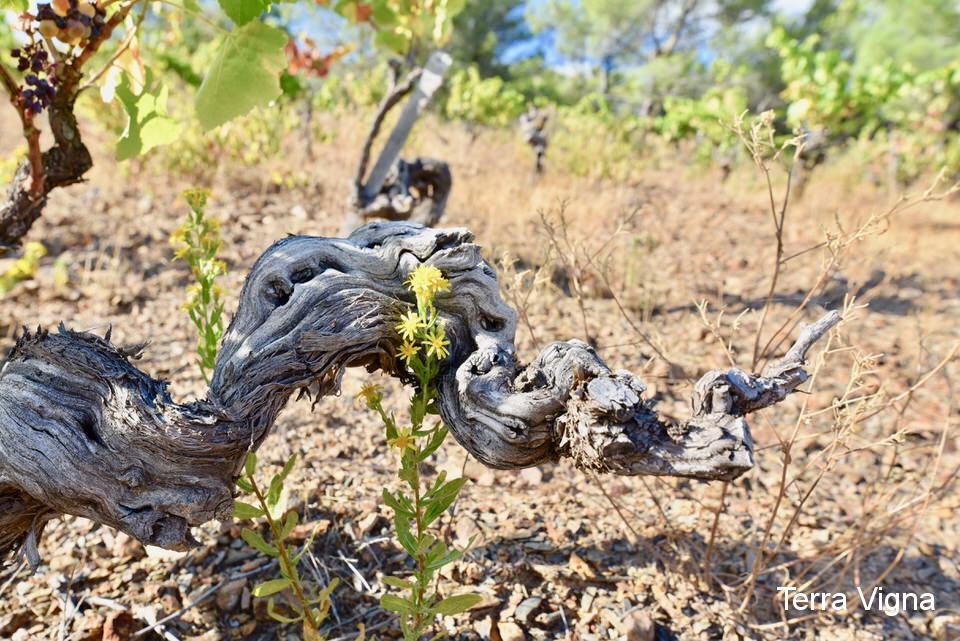
Despite the slight hunger that was creeping upon us, it was an exciting morning with the smell of fresh harvested grapes, the motor sounds of the de-stemmer, workers shouting above the din even as Vivien Roussignol was patiently explaining all the happenings!
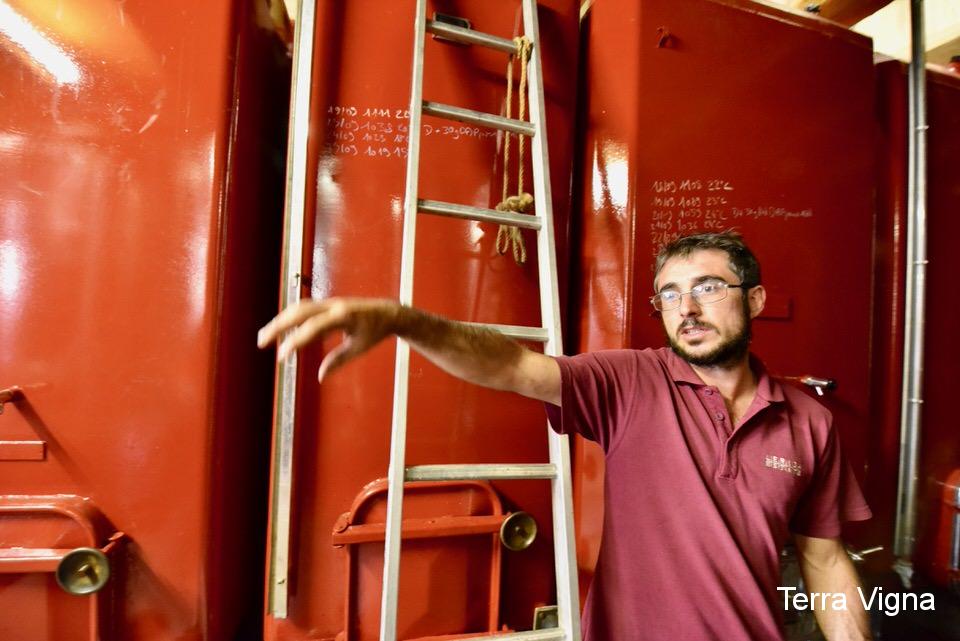
The tractor left to make a second run of the vineyards where picking was in full swing. We followed.
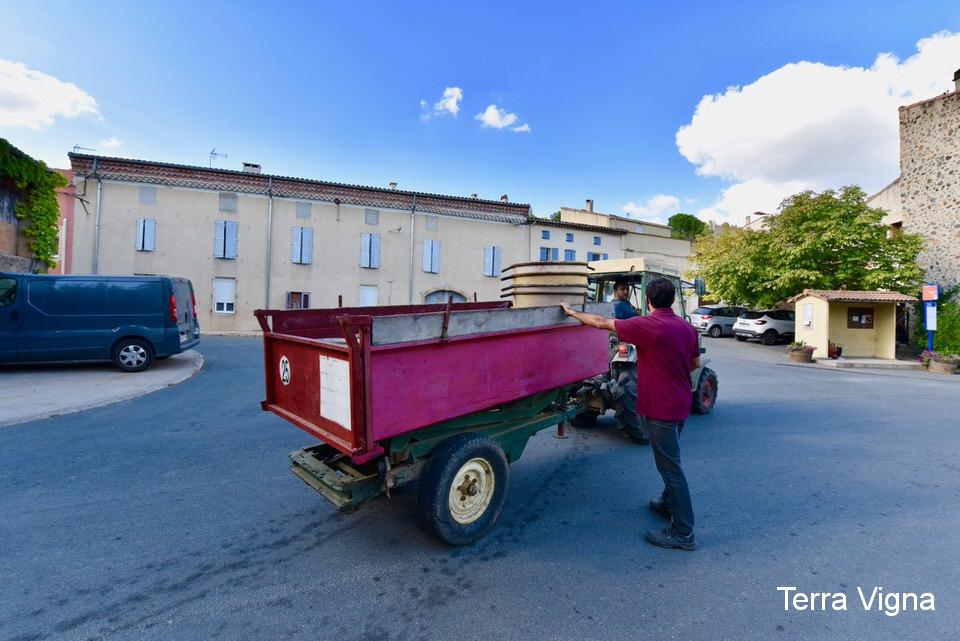
All harvest is done by hand here. This is because of the lack of space between the vines. Also, the Les Jalouses vineyard is planted in the goblet style and pretty haphazardly that only allows someone with a basket picking the grapes from each vine. So, that’s what they do. The baskets are then quickly transported to the winery.
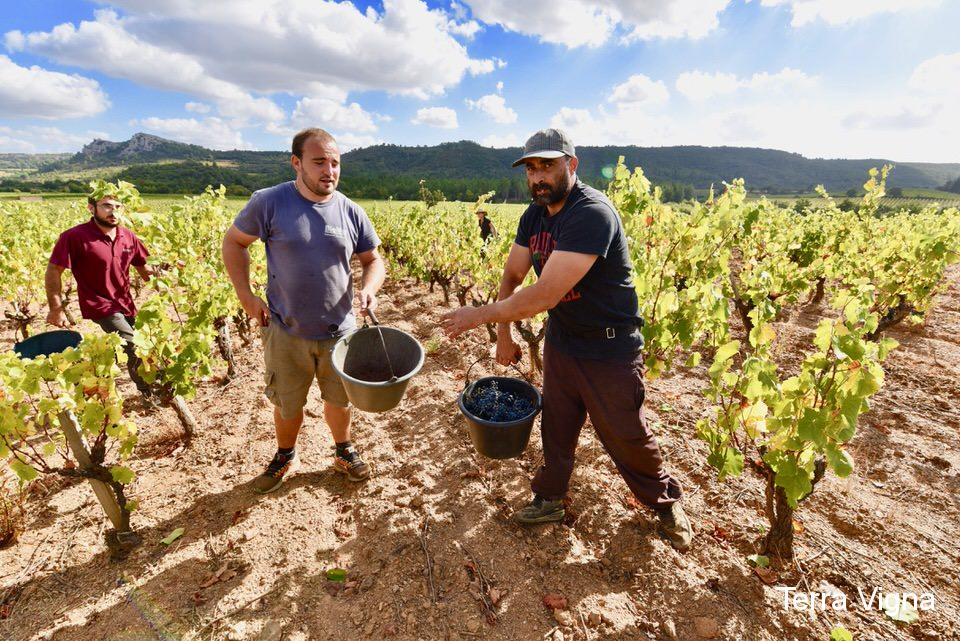
The vineyard is surrounded by lightly electrified wire. This is to prevent wild boars from entering the vineyard. While somewhat of a deterrent, some boars will be desperate enough to brave a slight electric shock just to get to the delicious fruit! Wild pigs are such a pest in these parts that hunters are sometimes hired to eradicate them.
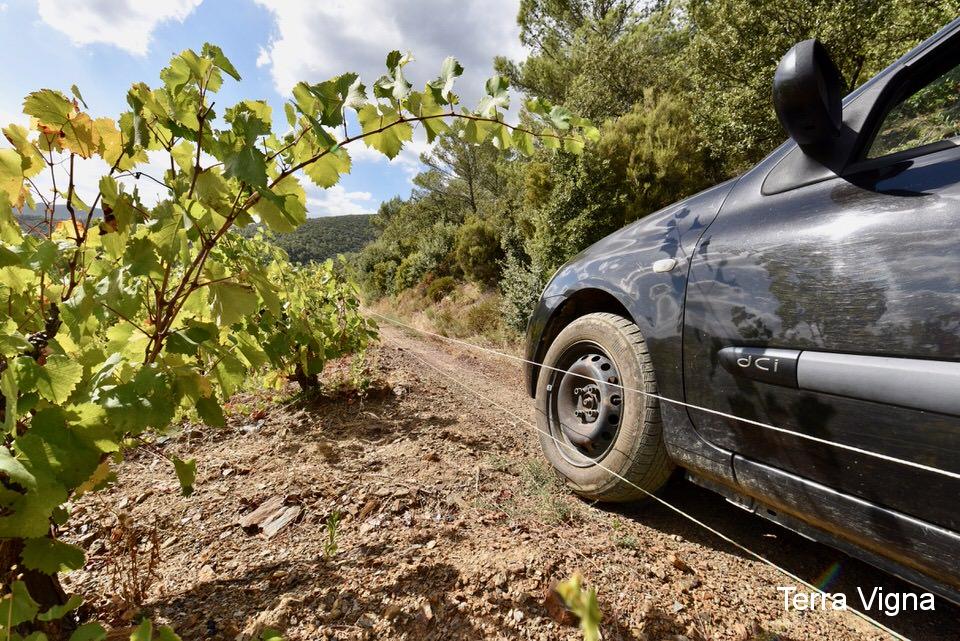
Schist is one of the factors that make this property special. In Saint-Chinian, there are terrains that are schist and ones that are calcareous. The calcareous soil traces back it’s origin to 30 million years while schist has taken 300 million years to get to this point! In a previous post, we touched upon schist a bit.
Here Vivien is showing us a typical schist rock.
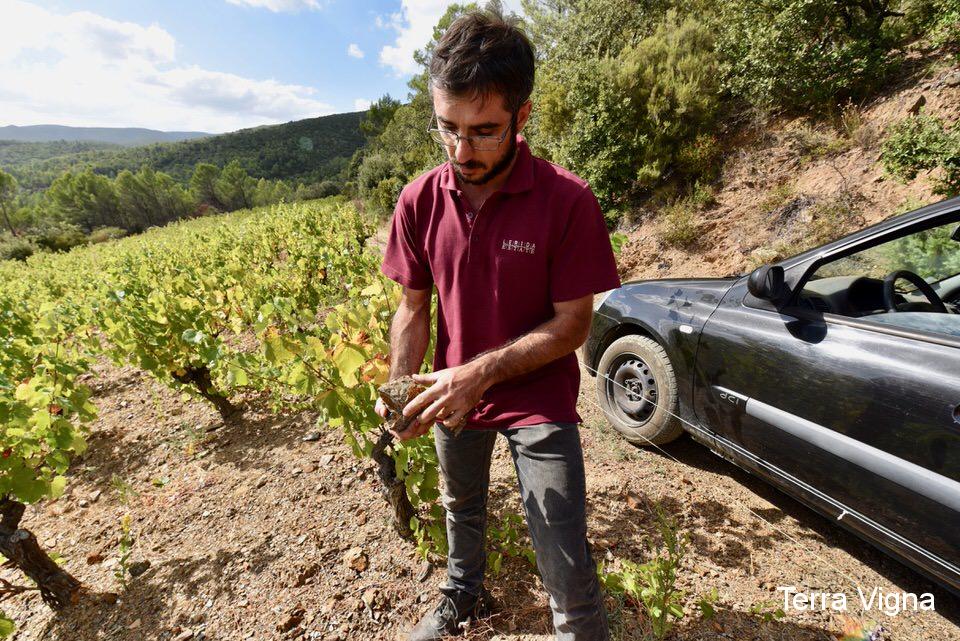
Once in the winery, the grapes are de-stemmed and crushed. The rosé is rosé de saignée, i.e. free run juice. Les Paissels doesn’t make a white wine. If they do, I will be drinking it!
Maceration is three weeks to one month long depending on the wine. Extraction is a combination of punch down or light pump over. Grapes from different parcels are vinified separately and are blended the following spring.
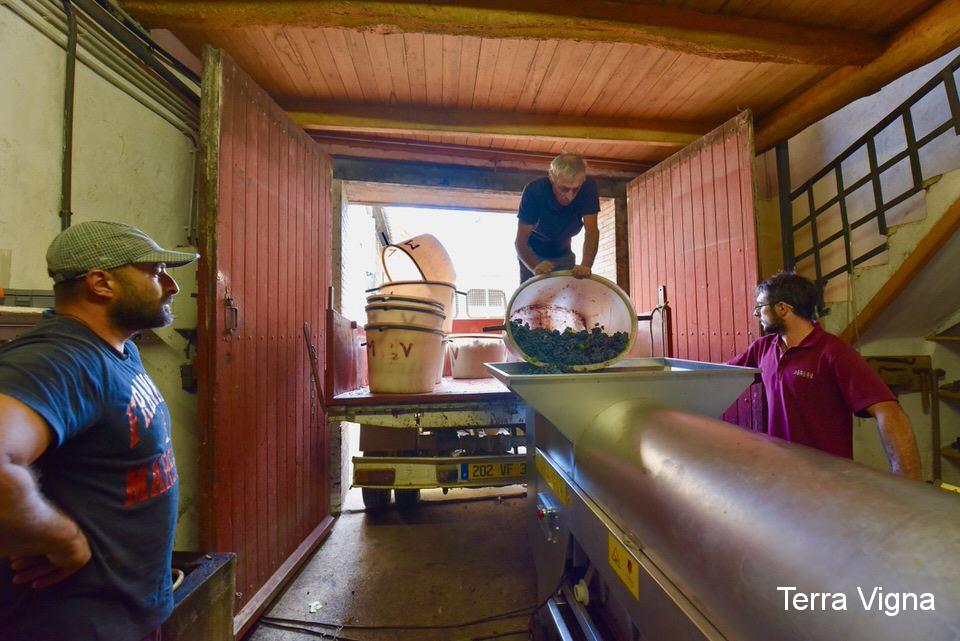
It was a very intimate experience being in this winery – humbling to the point to imagine that some of our most favorite wines came from here. It was a long morning, one that started sans petit dejeuner and now it was even past time for dejeuner! We hardly noticed.
We will talk about the wines in the next post. We haven’t forgotten about the story of Suze either. Stay tuned.
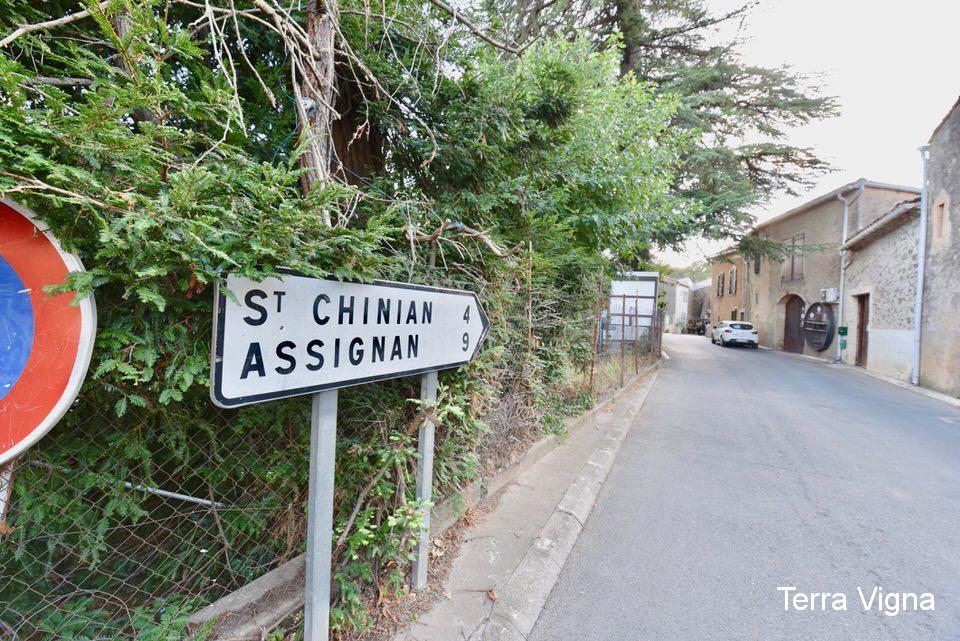


Facebook Comments